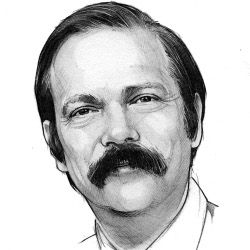
More interesting than their findings is their list of chosen determinants: innovative capabilities; governance and leadership; information flow; culture and values; adaptive response; risk structure; and legitimacy.
It is useful to keep these determinants in mind when we consider that Communications, having celebrated its 50th anniversary last January, is now older than most of its readers. Keeping a magazine in a leadership position for over 50 years is a daunting challenge indeed. As the Red Queen in Lewis Carroll's Through the Looking Glass, proclaimed: "Now, here, you see, it takes all the running you can do to keep in the same place. If you want to get somewhere else, you must run at least twice as fast as that!" In a fast-changing discipline such as ours, we need to run incredibly fast if we want Communications to remain the foremost monthly magazine for the leadership of the computing field.
In the anniversary issue last January, I wrote an essay ("CACM: Past, Present, and Future," pg. 44) describing the process initiated in early 2005 by then ACM President David Patterson to revitalize Communications. Upon ACM Council's approval of a new editorial model in June 2007, a major initiative was launched to achieve this vision. This issue is the culmination of that effort. To appreciate the magnitude of the task, consider the analogy "replacing the engines of a jet plane in mid-flight." A monthly publication cannot take a break. Communications continued to appear every month while behind the curtains major changes were taking place. Over the next few months, I will discuss these changes in greater detail and, more importantly, why these changes are necessary for Communications to maintain its leadership position.
An important component in this revitalization is the fortification of the professional staff producing it. A key addition to the fold is Scott Delman as Group Publisher. For Communications to continue to maintain its leadership position, it must excel not only editorially, but also as a business. Flagship publications of professional societies consume nontrivial fractions of their societies' budgets, and continual business innovation is critical to their success. Scott brings extensive experience in the scholarly publication marketplace; we are fortunate to have him join the team.
Another change is the establishment of a new editorial board (see masthead, pg. 4 or http://www.acm.org/publications/cacm/?pageIndex=5). This outstanding board brings together many of the leaders of the computing field, representing its diversity along many dimensions. The board is organized by teams, roughly corresponding to the different sections within the magazine. Unlike some distinguished editorial boards, this board is a working board. Producing a monthly publication requires an ongoing effort to "procure" high-quality material, which is the task of this editorial board. The quality of a publication such as Communications is critically tied to the quality of its editorial board. ACM is lucky to have so many dedicated volunteers.
Let me close by mentioning one new feature of the new content model with ties to the old days when Communications was a venue for top research papers. The new Research Highlights section provides readers with a collection of outstanding research articles, selected from the broad spectrum of computing research conferences. This section provides a broad overview of the most significant developments in computing research. Articles appearing in this section are first nominated by Editorial Board members or Approved Nominating Organizations, and are then subject to final selection by the Editorial Board. Prior to publication, authors are requested to rewrite and expand the scope of their articles, as appropriate for Communications' broad-based readership. Each selected Research Highlights article is preceded by a one-page Technical Perspective providing readers with an overview of the underlying motivation of the research, the important ideas to emerge from the work, and its scientific and practical significance. These Technical Perspectives are written by noted experts in the field addressed in the research article.
Moshe Y. Vardi
EDITOR-IN-CHIEF



Join the Discussion (0)
Become a Member or Sign In to Post a Comment